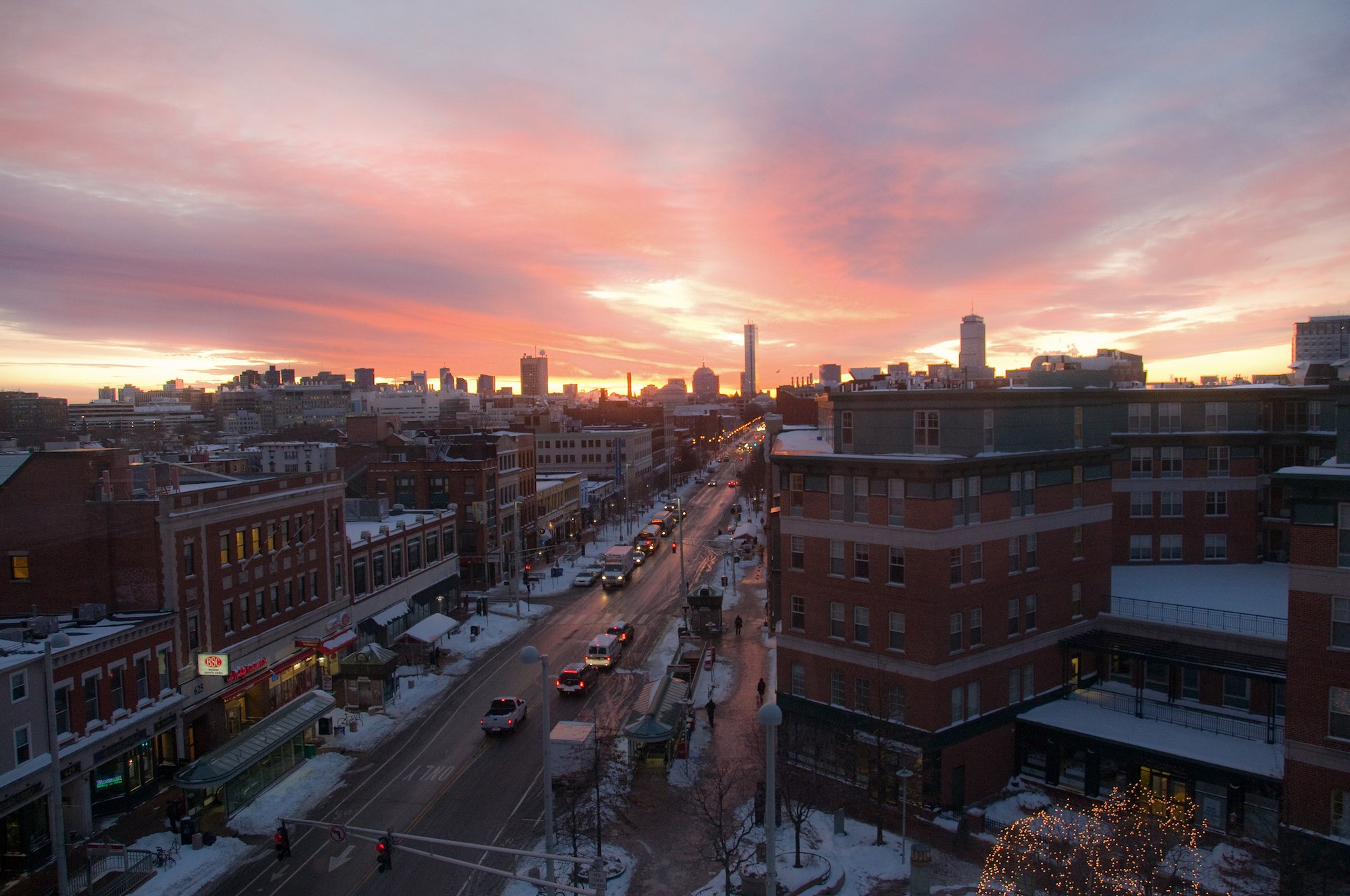The City of Cambridge, Mass., recently mandated that all non-residential buildings—including existing structures—larger than 100,000 sf meet a net-zero emissions requirement by 2035.
In a news release, Cambridge says it is “the first known city in the country” to enact a 2035 deadline for net zero. Mid-size buildings, defined as 100,000 sf or smaller, will have to reach net zero by 2050.
Buildings covered under the new law can continue to burn fossil fuels on site if owners purchase verified carbon credits, but only until 2050, and only to offset limited amounts of emissions. Building owners must eventually use renewable energy, either by investing in solar panels or purchasing a contract for renewable energy.
Cambridge has 314 buildings facing the 2035 net-zero deadline. “The City is committed to supporting Cambridge property owners with robust technical assistance and connections to incentives and moving forward together with this challenging yet absolutely critical work,” the news release says.
Cambridge will use a separate process to develop regulations to reduce greenhouse gas emissions in residential buildings.
Related Stories
Codes and Standards | May 24, 2021
Biden Administration will make new investments in building energy efficiency
Focus on grid-interactive buildings; Energy Star expansion; new targets for energy, water reduction.
Codes and Standards | May 20, 2021
Solar panel trade group issues guidelines to rid use of components built with forced labor
Growing concern that PV industry is dependent on work camps in China.
Codes and Standards | May 19, 2021
Smart electric panels can aid transition to renewable energy
Allow customers better control of circuits; utilities can better manage demand.
Codes and Standards | May 18, 2021
Cross-laminated timber performs better than expected in shear test
Tests conducted in support of new criteria for design of CLT diaphragm.
Codes and Standards | May 17, 2021
Latest Manual on Uniform Traffic Control Devices criticized for not considering bikes, pedestrians
More than a dozen advocacy groups want feds to start over.
Codes and Standards | May 13, 2021
LEED-certified federal buildings don’t use less energy than average
May be due to trade-offs on how score is developed.
Codes and Standards | May 12, 2021
White paper examines how to reduce pathogen transmission in ventilation
Pressure barriers and airflow distribution can be effective in existing buildings.
Codes and Standards | May 11, 2021
Pressure builds on White House to rein in cost of lumber
Spike in prices has added nearly $36,000 to price of average new home.
Codes and Standards | May 11, 2021
Residential codes should be upgraded to protect from cooking pollutants
Report examines ventilation standards, calls for increased public awareness of issue.
Codes and Standards | May 6, 2021
Blue roofs can provide relief to overwhelmed stormwater systems
Benefits most evident in industrial commercial areas.

















